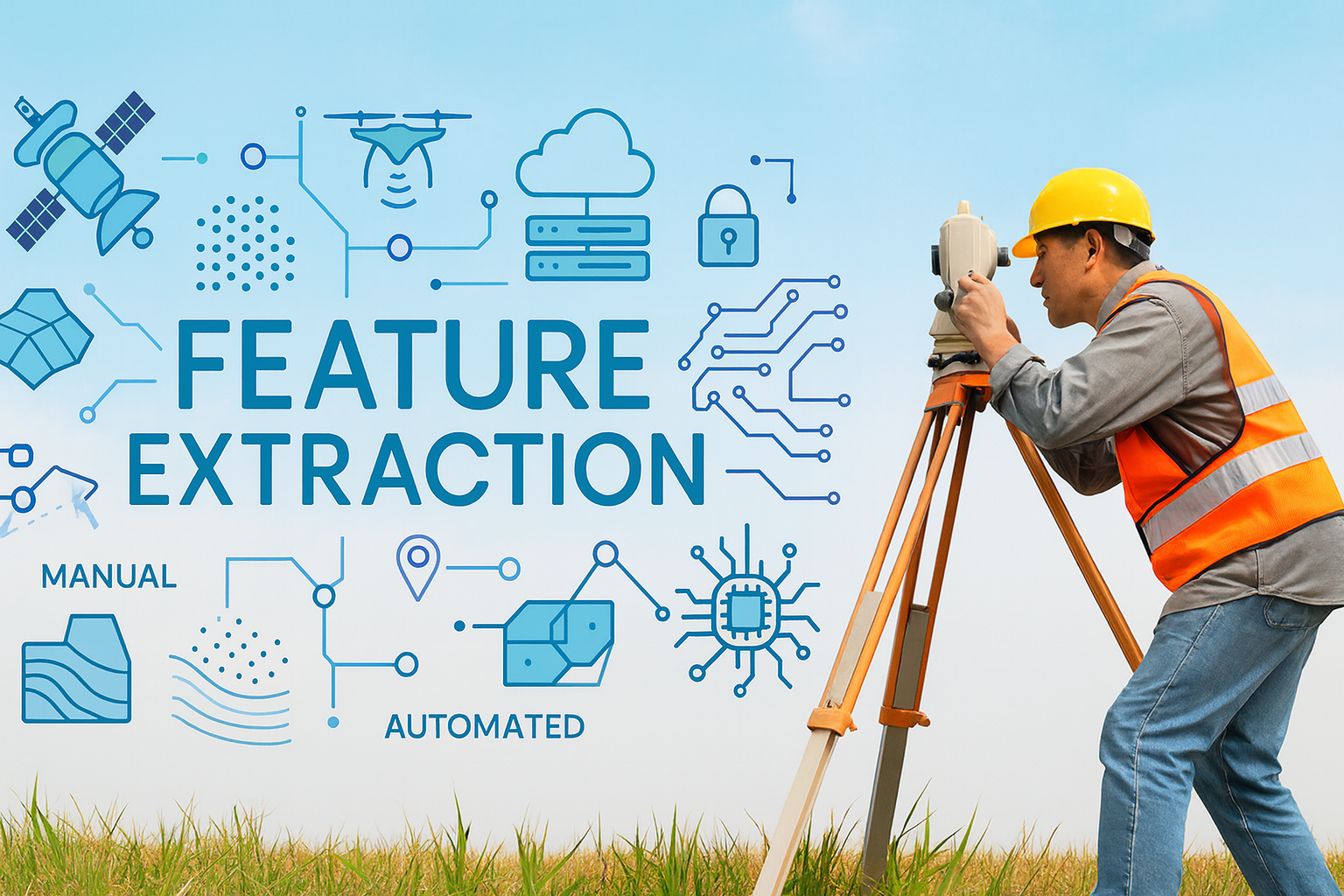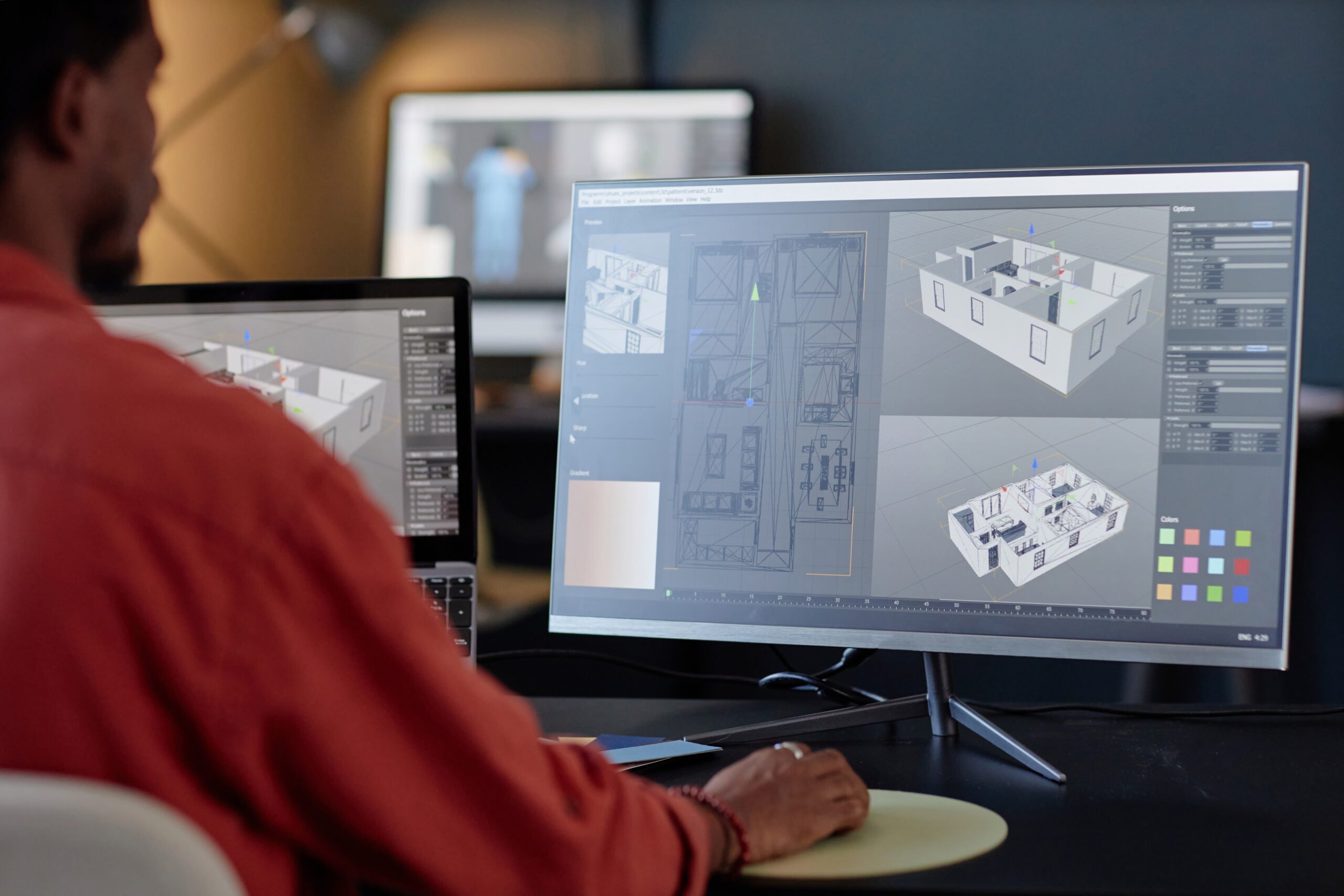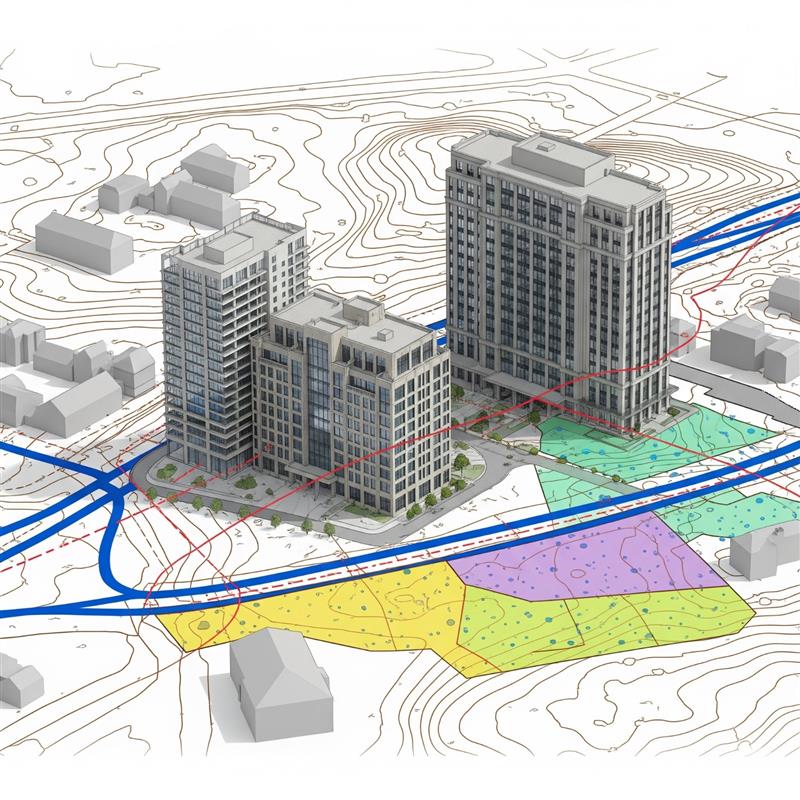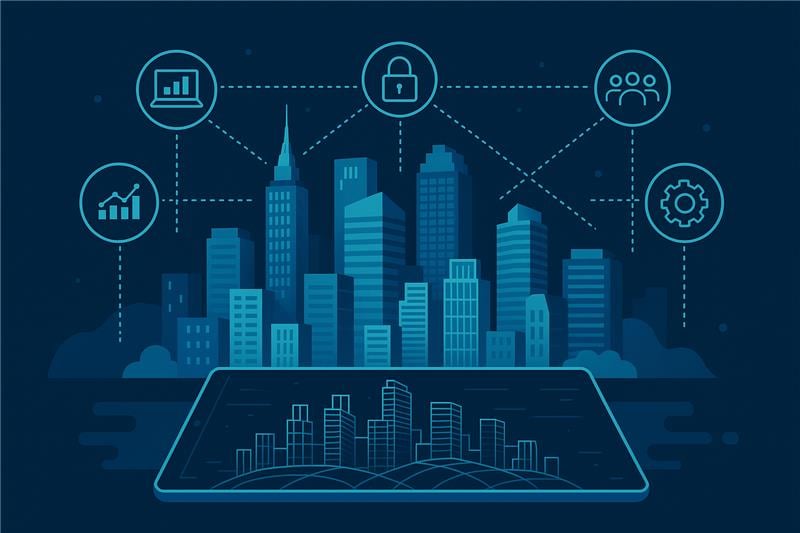
Surveying and geospatial intelligence have always been about turning raw data into decisions. Aerial photographs, LiDAR point clouds, and satellite images may appear visually impressive, but without interpretation, they remain nothing more than unprocessed datasets, static collections of pixels and points. What gives these inputs value is feature extraction, the process of isolating meaningful objects […]
Read article >
A Geographic Information System (GIS) is an integrated framework for capturing, storing, managing, analyzing, and visualizing location-based data. By linking geographic coordinates with descriptive attributes, GIS provides an unparalleled ability to observe patterns, relationships, and trends in both natural and built environments. This capability is transforming decision-making across sectors such as telecom, urban planning, disaster […]
Read article >
Building Information Modeling (BIM) has fundamentally reshaped the Architecture, Engineering, and Construction (AEC) industry. For years, it’s been the bedrock of design optimization, clash detection, and construction sequencing, transforming static blueprints into integrated, data-rich 3D models. Yet, for all its power during a building’s creation, a vast frontier of its value—the operational phase—has largely remained […]
Read article >
As telecom operators around the globe navigate rising demand for high-speed connectivity, increasing infrastructure complexity, and shrinking operational margins, new technologies are helping the industry rewrite the rules. Telecom operators today are leveraging generative AI to solve some of the most complex challenges in network engineering. These applications go far beyond automation; they reflect a […]
Read article >
The global Architecture, Engineering, and Construction (AEC) industry is undergoing a significant paradigm shift, driven by the increasing complexity of projects, stringent sustainability mandates, and the relentless pursuit of operational efficiencies. Historically, Building Information Modeling (BIM) has advanced project delivery at the asset level, while Geographic Information Systems (GIS) have provided critical spatial context at […]
Read article >
Introduction Planning and deployment of Distributed Antenna System (DAS) in dense urban environments presents one of the most technically complex challenges in wireless network design. Multi-stored buildings, reflective glass, narrow streets, and inconsistent elevation create propagation issues that standard radio frequency (RF) planning tools often fail to predict. Even with accurate floor plans and baseline […]
Read article >
The maturation of urban digital twins over the coming decades represents a paradigm shift from static 3D visualization to dynamic, predictive, and interactive cyber-physical systems. The realization of this vision is contingent not merely on advancements in computational power and sensor technology, but on solving a tripartite challenge: establishing robust governance architectures, ensuring longitudinal data […]
Read article >
Geographic Information Systems (GIS) have become integral to the telecommunications industry, enabling operators to plan, design, build, and manage networks at scale. From strategic site selection to predictive demand modelling, GIS provides the spatial intelligence telecom providers need to accelerate deployment, reduce costs, and enhance service quality. The GIS market in the telecom sector is […]
Read article >